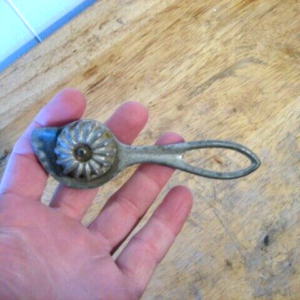The Vintage Cotton Box: History, Usage, and Legacy
A Glimpse into History
The vintage cotton box, often referred to as a cotton holder or cotton dispenser, emerged during the late 19th and early 20th centuries. This era witnessed significant advancements in textile manufacturing and domestic goods, driven by the Industrial Revolution. Cotton, being a widely used material in households for various purposes, required practical storage solutions. Thus, the cotton box became a staple in homes, pharmacies, and medical facilities.
Practical Usage
Domestic Use
In homes, vintage cotton boxes served multiple purposes. They stored cotton balls and swabs, essential for personal hygiene and beauty routines. Women used cotton for applying and removing makeup, while families utilized it for first aid, cleaning, and various household tasks. The boxes often featured intricate designs and were made from materials such as tin, wood, or porcelain, adding a touch of elegance to the home decor.
Medical and Pharmaceutical Use
In medical and pharmaceutical settings, cotton boxes played a crucial role in maintaining hygiene. They stored sterilized cotton for wound care, surgical procedures, and other medical applications. The design of these boxes ensured that the cotton remained clean and easily accessible. Pharmacies also used these boxes to dispense cotton to customers, promoting sanitary practices.
Evolution and Design
Over the decades, the design of cotton boxes evolved to reflect the aesthetic preferences and technological advancements of the times. Early designs were simple and functional, but as manufacturing techniques improved, they became more ornate. Art Deco and Art Nouveau styles influenced the design of cotton boxes in the early 20th century, leading to the creation of visually appealing and collectible items.
Materials also diversified, with early boxes primarily made of metal or wood, and later versions incorporating glass, ceramic, and plastic. Some featured elaborate engravings, embossed patterns, or hand-painted decorations, making them not just utilitarian objects but also works of art.
Legacy and Collectibility
Today, vintage cotton boxes are cherished by collectors and enthusiasts of antique home goods. They are valued for their historical significance, craftsmanship, and aesthetic appeal. Collectors seek out boxes from specific periods or with unique designs, often displaying them as part of vintage home decor.
The legacy of the vintage cotton box extends beyond its practical use. It represents an era when everyday objects were crafted with care and attention to detail. These boxes are tangible reminders of the past, offering insights into the domestic and medical practices of earlier times.
Modern Appreciation
In contemporary settings, vintage cotton boxes are often repurposed as decorative items. They add a nostalgic touch to bathrooms, dressing tables, and medical-themed displays. Some modern manufacturers even produce replicas of vintage cotton boxes, catering to the growing interest in retro and vintage decor.
Conclusion
The vintage cotton box, once a commonplace household and medical item, now stands as a testament to historical design and practical ingenuity. Its evolution from a simple storage solution to a collectible artifact highlights the intersection of utility and artistry in everyday objects. As we appreciate these vintage pieces, we not only celebrate their aesthetic and historical value but also honor the craftsmanship and innovation of the past.



